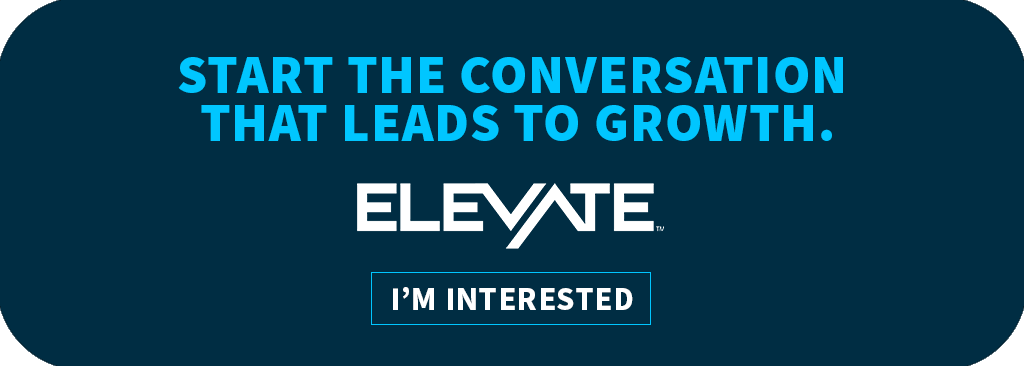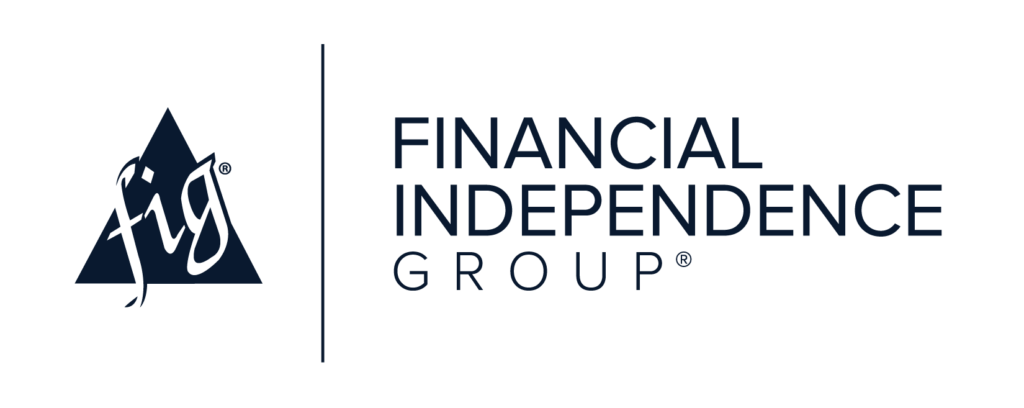The digital marketing landscape is always changing, but if you can harness its power as a financial advisor, you could be setting yourself up for long-term success.
It won’t get any less complicated, so challenge yourself and your business to push your marketing strategies further into the digital space to better serve your clients, understand their needs, and match their goals with optimal solutions.
As the digital marketing landscape expands, financial professionals must be flexible and adaptable to maintain their carved-out space in the industry. Strategize ways to disrupt the norm to better build connections, raise brand awareness, and lead your clients to action through your digital channels.
Proven Digital Marketing Strategies for Financial Advisors
Email Marketing
It’s no secret that email has been a staple in the marketing and branding toolbox since the 1980s. A recent study projected more than 4.6 billion email users by 2025. This figure alone makes up more than half of the world’s population.
And you guessed it; email marketing isn’t going away anytime soon. Email marketing is set to take on new elements to increase engagement and track more critical metrics than the traditional and widely used open rate. But what will that mean for our inbox?
With the continuously evolving customer relationship management systems (CRMs), traditional segmentation has moved from manual entry to automated processes allowing for better-targeted content distribution. The touch of a button can analyze consumer behavior and email content curated to drive customers to act with motive and intention.
A Focus on Email Security
Cybersecurity features have become a focal point among platforms and phone technologies, posing interesting obstacles alongside increased security and online safety. With the implementation of masked IP activity, such as Apple’s Mail Privacy Policy, the long-trusted open-rate metrics have become unreliable.
Transitioning focus from open rates to conversion rates, unsubscribe rates, and bounce rates may give you a clearer picture of the effectiveness of your email content. With that in mind, the content and relevancy of your emails must be focused to maintain engagement.
With email marketing playing a critical role in financial advisors’ digital marketing strategies and users being bombarded by emails daily, the simple segmentation and personalization tactics aren’t cutting it anymore. More personalization has become a demand by consumers.
In fact, 49% of consumers say that they’d become frequent and loyal customers if they were provided with a personalized experience. Here are a few things to think about implementing:
- Provide your recipient with attention-grabbing, in-email appointment setting options. Rather than just including a link to an outside source such as your website or updates, use branded clickable buttons, or any surveys implemented throughout the year.
- Send out newsletters with the latest and greatest. 81% of marketers worldwide send newsletters through email. Ensure you’re putting time and effort into your newsletter and providing only timely, relevant, and intentional information to make yours stand out from the bunch.
- Update your “From” name. The main goal of email marketing is to build trust with your client as an email sender. “No Reply” names lead to decreased response rates and deliverability because each email sent is a touchpoint. If your recipient feels as though they can’t reply, you’re losing out on many potential conversations.
Email marketing can be a very impactful and effective way to promote your brand and services and connect with your target audience. Email marketing is often the starting point of a relationship and can raise brand awareness and establish customer loyalty, which is essential for success.
Related: Email Marketing for Financial Advisors: 9 Easy Tips to Increase Your Conversions
Conversational Marketing: It’s More Than a One-Way Street
Within the financial services industry, a big key player in building mutually beneficial relationships is through two-way conversations. Conversational dialogue can lead to essential interactions that convert prospects to clients faster.
Conversational marketing is about shifting your focus from prioritizing the sale before the customer to prioritizing the customer before the sale. Doing so can lead to a relationship based on trust, engagement, and repetitive business.
Utilizing this strategy, especially in tandem with others, can help take the lead-generation process to the next level without getting caught up in a one-way communication-stopping funnel, such as an email campaign that a potential client on the mailing list may not have seen or opened. You can quickly identify your customers’ problems and establish a solution.
Social Media and Content Marketing for Financial Advisors
Crafting social media campaigns and branded content across social channels allows you to deliver relevant information, announcements, educational materials, and more to a broad audience. Social media can highlight your brand to many people quickly and effectively within the digital marketing world.
Generating positive conversations surrounding your brand and products is a beneficial aspect of posting on social media with intention. Engaging with people interested in your services enables your post to appear within their feed and be seen by their followers, instantly growing your social reach.
To effectively communicate to your target audience through social media channels, it’s essential to understand the user’s intent on each platform. For example, LinkedIn generally contains more professional, informative, and educational information, whereas Instagram contains more relatable, fun, and graphic-driven content.
Understanding the message you want to deliver, your target audience, and what social media platforms they may use is valuable information to analyze and understand for crafting impactful campaigns.
Social media is also a place where you can easily and more “candidly” share your brand story: what’s your why? Carefully and intentionally develop your brand message to educate and inform, yet create a space for conversation, collaboration, and trust.
With artificial intelligence software on the rise, social media posts will be generated for users based on what they typically view and the content they search for to provide them with the content they deem important. Make sure to use consistent messaging across posts and platforms so that you’re in the best possible position regarding social media algorithms. With consistent messaging, the algorithms are more likely to place your content in the hands of potential clients.
Related: Building Your Brand: Content Promotion Tips for Financial Advisors
More Videos Make Memories
Over the last few years, there’s been a significant increase in content creation revolving around the use of sound and video. With big thanks to smartphones, high-quality pictures and videos can be taken with the click of a button.
Videos of the past have focused on long-winded, drawn-out infomercials as a form of a sales pitch. While helpful, these videos often exhaust the reader’s attention span. There’s a better way, and it’s shorter and to the point!
In 2022, 85% of marketers said that short-form video content generated the highest audience engagement compared to all other content types, and 54% of consumers wish to see more video content from brands they consume.
After the video content creation boom in 2021 and 2022, video marketing has strongly impacted how people market their business. Research shows that around 88% of consumers have been influenced by video content to purchase products and services. But why?
Video provides a more face-to-face method of delivering information to a mass audience rather than written text. Creating content based on information and education can build credibility and trust between your business and your target audience.
Video marketing and conversational marketing have similarities in how information is communicated. If done correctly, video marketing can deliver a similar level of personality, knowledge, and messaging to a much larger group of people.
Choosing the Best Video Style Based On Intended Use
When creating videos, you should be intentional with what type of video content you’re putting out and why. Here are a two main types of videos and how their content is best used:
- Short-form: With shorter videos, you can easily create content that showcases personality, personifies your company, and is relatable to your audience.
Some examples of short-form video content may include TikTok and Instagram Reels focusing on explaining a particular product, demonstrating quick “how-tos,” and cultural elements of your business. 85% of marketing professionals believe that short-form videos are the most effective content format on social media.
- Long-form: Longer-form content usually best lies on platforms that house videos for a more extended time for individuals to refer to rather than watch and scroll past on social media platforms.
Some of these channels may include YouTube or your business website. These platforms are great spaces to house more in-depth educational videos rather than a channel such as Instagram that focuses on more dynamic, shorter-form content.
Providing a space to watch a podcast rather than solely listen to or film parts of your events may help broaden your range of available content and help you to create an online educational hub for individuals to utilize. Longer isn’t inherently better, so make sure to understand the video’s purpose and ensure only relevant information is included to keep your audience’s attention captured.
Brand awareness and creating connections are all about making a lasting impression. Video and audio trigger the visual and auditory elements of information delivery and help create a more memorable and impressive user experience.
Related: How to Promote a Podcast Appearance in 10 Easy Steps
The Online World Will Continue to Evolve; Let’s Evolve with It
Digital marketing is continuously evolving. Emerging technologies have created a space where it’s important to stay educated to best deliver your message to your audience in the most impactful way possible.
Understanding the differences between social media platforms and digital marketing channels will help you decide on the best marketing strategies that suit you and your audience. How you select strategies boils down to understanding your audience and their needs and how to match solutions with their goals.
Continuously developing your brand, crafting messaging to persuade, and delivering relevant and reliable information, knowledge, and education will continue to be the foundation for future marketing strategies.
How to Elevate Your Digital Marketing
Are you a financial professional looking for support in developing and expanding your marketing strategies, branding, and digital assets?
Fully equipped with industry-leading coaches and consultants, our Elevate program is ready to address all your marketing and business development needs. Whether it’s crafting email and social media campaigns, utilizing cutting-edge lead generation strategies, or providing new ideas to enhance your marketing efforts, we can help.
ElevateU is an exclusive opportunity to engage with the Elevate program and our industry thought leaders and marketing experts to arm you with the knowledge and resources your business needs to experience powerful and sustainable growth.
Visit the ElevateU event website today to learn more about our speakers, event agenda, and entertainment options that await.
But if you can’t make the event, don’t worry. You can explore all of the benefits of an Elevate membership by clicking the image below.
For Financial Professional Use Only



